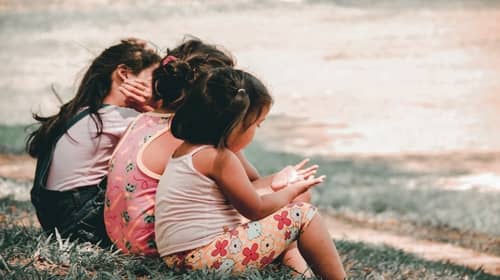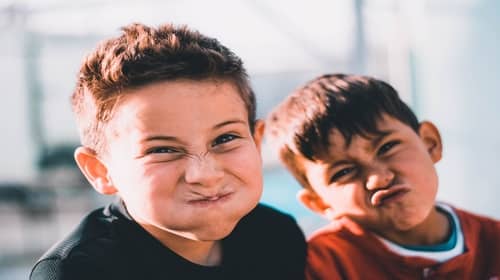Keeping Children and Young People Safe Online
Online platforms provide children and young people with various options to learn, play, and connect. More than ever, children and young people can easily access educational materials, games, and communities that help them grow. But online environments are not without risks.
Authored by: Dominic Cudmore
Translate Text
Table of Contents
Keeping Children and Young People Safe Online
Thanks to online platforms, young people have various options to learn, play, and connect. More than ever, children can easily access educational materials, games, and communities that help them grow. But online environments are not without risks. Keeping children and young people safe online is an essential responsibility for organisation working with or in contact with children and young people.
Online safety risks for children and young people include:
- Exposure to inappropriate content or images
- Inappropriate adult/child relationships
- Abuse including harassment or cyberbullying
- Unwanted online contact
- Non-consensual sharing of images
- Online grooming and exploitation
- Breaches of personal data or data misuse
The National Principles for Child Safe Organisations (National Principles) emphasise online safety as an important element for any organisation working with or in contact with children and young people. It is important for organisations to examine and regularly review the online safety environment for contact with children and young people. Many online risks and dangers to children and young people evolve rapidly, and they may call for a prompt revision of your organisation’s principles, processes, and Child Safe Code of Conduct.
What is Involved in the Online Safety for Children and Young People?
Creating safe physical and online environments for children and young people should be a critical focus for any organisation committed to their safety and wellbeing . Every leader, staff members and volunteer, has a role in protecting children and young people.
Online safety for children and young people looks like this:
- Children and young people should be encouraged to have open discussions about online safety
- Children and young people should understand that boundaries and respect are essential when engaging in the online world
- Children and young people should become familiar with the benefits and risks of social media
- Children and young people should understand the risks of speaking to strangers online
- Children and young people should be aware of their rights when it comes to online safety
- Children and young people should be aware of the person(s) they should notify if they have a concern about online safety
Depending on your organisation’s level of online engagement, your policies and procedures can highlight online safety where necessary. You can also include online protection for children and young people in your Child Safe Code of Conduct.
Online safety will look slightly different in each organisation. It may include guidelines about:
- Not sharing personal information online
- Avoiding unknown Wi-Fi networks
- Not lending a device to other people
- Not accepting friend requests or messages from strangers.
Children should be invited to participate in conversations around online safety. They will likely have much to contribute.
Benefits of Online Safety for Children and Young People
By creating safe environments, both physical and online, your organisation reflects priorities and standards that align with your mission/purpose. Children, parents, guardians and the broader community will then recognise that your organisation places a strong emphasis on protecting children and young people.
As a result, children and young people will gain greater awareness of online safety. They will be more likely to recognise abuse, stand up for themselves, and speak out when the consider something to be dangerous or inappropriate.
Sometimes, children and young people hide scary or uncomfortable things from adults simply because they blame themselves for the experience. Clear, straightforward discussions about online safety can equip and empower children and young people to know they are not to blame when something inappropriate happens online.
How to keep Children and Young People Safe Online
Our Checklist for Keeping Children and Young People Safe Online [link to tool] can help you identify areas for improvement and keep track of your organisation’s progress. Once you complete the assessment, you can begin to take steps to respond to incidents, keep people informed, and grow your organisation’s commitment to the online safety of children and young people.
Many steps can ensure online safety:
- Make sure everyone in your organisation is well-informed about online safety
- Ensure that everyone in your organisation is aware of their responsibility to keep children and young people safe online
- Create a plan of action for dealing with unsafe online behaviours
- Make sure everyone knows how to keep personal data safe and secure
- Empower everyone in your organisation to stay safe online and learn how to recognise potential risks
A safe online environment minimises the likelihood of a child or young person being harmed or put at risk during online interactions. Being mindful of potential online risks to a child or young person will help to make your organisation a safer, healthier place for everyone, especially children and young people.
Conclusion
Starting a conversation about keeping children and young people safe online is a great place to start. This way, leaders, staff, volunteers, parents/guardians and children and young people will develop a strong understanding of appropriate and inappropriate behaviours.
Within a child safe organisation, children and young people will feel empowered to speak up, consider that their thoughts and opinions matter and know exactly where to turn when they are in danger. There should be clear policies about those to whom a child or young person can speak about online safety concerns, in the knowledge that their concerns will be taken seriously.
Online platforms continue to offer valuable educational and social experiences for children and young people. But a child safe organisation understands the importance of protecting children and young people from the inherent dangers of the digital world.


